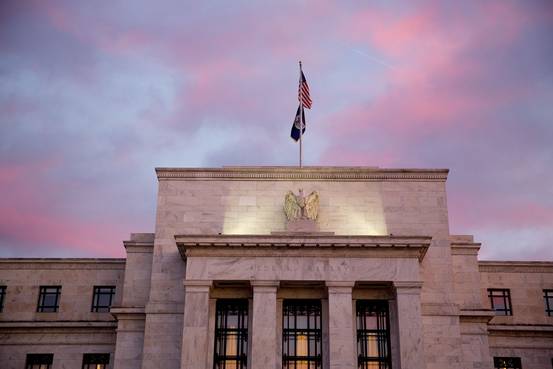
- Andrew Harrer/Bloomberg News
A flattening “yield curve” is the latest sign of the tricky global cross-currents the Federal Reserve must navigate following years of ultraeasy policy.
The curve, reflecting the yield differential between two-year and 10-year U.S. government debt, has flattened to 1.40 percentage point this week from 2.28 percentage points a year earlier.
The good news is that the flattening isn’t the surefire sign of U.S. recession that it used to be. Before the post-financial crisis world of ultralow interest rates and expansive central-bank policy, a flattening curve typically signaled the market believed that rising short-end interest rates would put a brake on borrowing and economic activity.
This time around, the yield gap is shrinking primarily because global demand for scarce Treasury notes and bonds is driving down long-term rates.
Perhaps uniquely in its history, the U.S. yield curve is now shaped as much by foreign monetary policy as the Fed’s. Expanded bond-buying programs by the European Central Bank and Bank of Japan have sent yields to near or below zero in their home markets. By comparison, something approaching 2{01de1f41f0433b1b992b12aafb3b1fe281a5c9ee7cd5232385403e933e277ce6} on securities backed by the U.S. government looks attractive.
For foreign investors, longer-dated Treasurys “are the only place on the globe where you can get both yield and safety,” says Mary Ann Hurley, vice president of trading at D.A. Davidson & Co.
A decline in long rates often worries investors by signaling softening economic expectations. Despite the hiccups from a cold winter, those expectations are still generally geared toward stronger U.S. growth, tighter labor markets and, eventually, wage increases.
Yet the broadly positive aspects of this flattening episode can’t obscure the fact that in a global financial system defined by extraordinarily loose monetary policy, the Fed has an extremely difficult balancing act as it seeks to raise rates and restore healthy credit creation.
As the Fed emerges from a highly unusual monetary stance in which the fed funds rate has been practically at zero for almost seven years, “any move to a more normal stance will cause the yield curve to flatten,” says Gary Pollack, portfolio manager Deutsche Bank AG’s private wealth management unit, which manages $12 billion. A normally simple process in which domestic rates rise has been “complicated by what’s going on globally.”
Investors are lightening their holdings of shorter-dated Treasury notes in response to the Fed’s cautious plan to end more than six years of near-zero interest rates. The two-year U.S. Treasury yield has risen to 0.56{01de1f41f0433b1b992b12aafb3b1fe281a5c9ee7cd5232385403e933e277ce6} from 0.40{01de1f41f0433b1b992b12aafb3b1fe281a5c9ee7cd5232385403e933e277ce6} over the past year.
In a healthy growth environment, the market is supposed to do the same at the long end of the curve, pushing up yields, which equate to lower prices. In effect, investors typically demand a premium for inflation risk and the fact that bigger returns should be available on riskier assets.
But the opposite is occurring with long-end U.S. debt, where the yield on 10-year Treasurys has fallen to a recent 1.96{01de1f41f0433b1b992b12aafb3b1fe281a5c9ee7cd5232385403e933e277ce6} from 2.68{01de1f41f0433b1b992b12aafb3b1fe281a5c9ee7cd5232385403e933e277ce6} a year earlier.
Foreign investor demand isn’t the only cause. Sub-2{01de1f41f0433b1b992b12aafb3b1fe281a5c9ee7cd5232385403e933e277ce6} yields on 10-year Treasurys do reflect low U.S. inflation expectations too. Yet here too international forces loom large.
Plunging oil prices have generated disinflation world-wide. Meanwhile, the contrast between the Fed’s desire to raise rates and other central banks’ easier monetary stance is driving money into the dollar, whose gains end up lowering import prices.
None of this would matter except that a flat yield curve is a disincentive for banks to lend money. They prefer a steeper curve, which means they can borrow cheaply over the short term from depositors and lend out for longer periods at higher rates.
Indeed, there’s plenty of data to suggest banks have cut back on lending. Yet again, the cause-and-effect from the yield curve is not cut and dry. Other factors, especially tougher post-crisis regulations, have contributed to the banks pulling back.
Right now, it’s the super-low absolute level of interest rates that dictates credit generation more than the differential between deposit and loan rates, argues Ian Lyngen, senior government bond strategist at CRT Capital Group. That’s seen in record corporate bond issuance. Companies are bypassing banks and going straight to capital markets for their borrowing needs.
Two problems: one, much of that borrowing has been used to retire old debt or to buy back stock rather than invest in equipment, research and development or new hires; and two, smaller businesses, which employ more Americans overall than large companies, still depend on bank lending.
The Fed is no doubt bothered by this. Yet its own bond-buying has encouraged the distortions. Three quantitative easing programs and, since then, a policy of reinvesting repayment proceeds to top up its Treasury and mortgage bond portfolio have created a scarcity of long-end debt. That has dragged down the benchmark yields on which corporate bonds are priced, making them attractive vehicles for financial reengineering.
Many believe the Fed should stop reinvesting in bonds after it has raised rates to avoid stoking even bigger distortions. That pits them against an FOMC membership that’s worried the economy is still too fragile to handle a double whammy.
All of this merely underscores the challenge the Fed faces in juggling a host of international forces that are mostly outside its control. It’s really the only clear message to take from a flatter yield curve.
SOURCE: MoneyBeat – Read entire story here.

